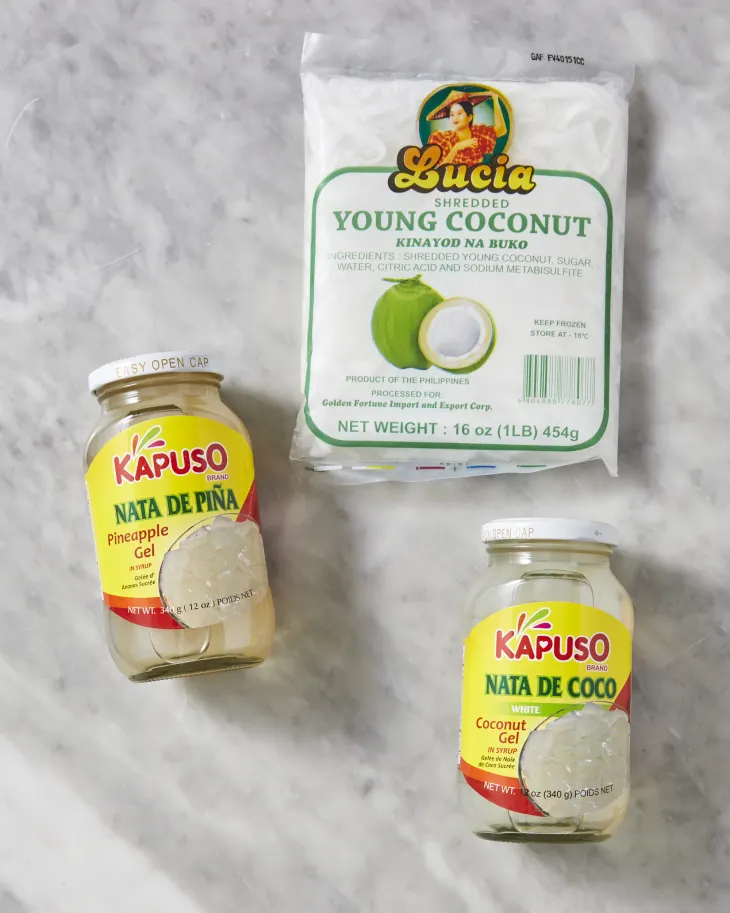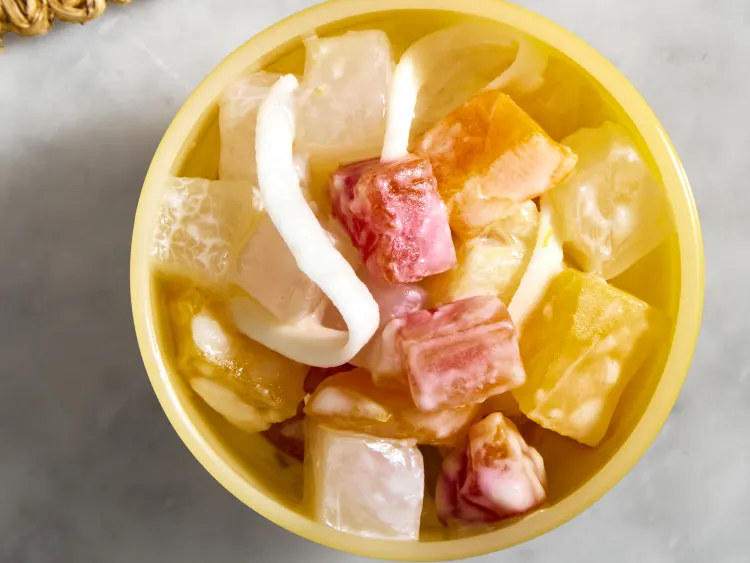No Filipino gathering is complete without our version of fruit salad — a creamy, luscious concoction that’s brimming with juicy fruit and drenched in sweetened condensed milk. When I was growing up, my mom brought this refreshing fruit salad to each and every birthday party, graduation, and holiday celebration. It’s her go-to sweet that she’s slowly perfected over the years.
There are no hard-and-fast rules when it comes to Filipino fruit salad. Outside of using canned fruit and sweetened condensed milk, no two fruit salads are alike. This recipe is inspired by the one I grew up eating.

Ingredients You Need to Make Filipino Fruit Salad
There are many, many versions of fruit salad out there. As long as you use a mix of canned fruit and sweetened condensed milk, the rest is completely customizable.
Canned tropical fruit salad. Typically, this salad is made with canned fruit cocktail (peaches, pears, grapes, pineapple, and cherries). But I tested a version with canned tropical fruit salad — featuring tender pieces of pineapple, papaya, and guava — that I found extra delightful. The recipe below calls for tropical fruit salad, but you are welcome to use fruit cocktail, or a mix of the two.
Canned peaches packed in juice. My mom alternates between adding canned peaches or pineapple to her fruit salad. I call for peaches because I’ve always been a fan of their supple sweetness. If you like, feel free to use pineapple chunks in place of the peaches or substitute an equal amount of canned mandarin oranges or lychees.
Frozen young coconut (kinayod na buko). This is the soft, tender flesh of young coconuts. It is commonly found in the frozen section of Filipino grocery stores. If you can’t find it, you can use a jar of macapuno (also known as coconut sport string), which are cultivated from a variety of coconut with a jelly-like texture.
White nata de coco (coconut gel). A Filipino specialty, these translucent, chewy cubes are made from fermented coconut water.
Nata de piña (pineapple gel). Jelly-like cubes made from fermenting pineapple juice. If you’re having a hard time tracking it down, you can use another jar of nata de coco in its place (the more, the merrier) or just go without.
Sweetened condensed milk. The backbone of Filipino fruit salad, which provides its creamy sweetness. Compared to other recipes, I like to use less liquid to ensure that the fruit is nicely coated in the “sauce,” as opposed to swimming in it.
Sour cream. You’ll mostly see recipes calling for heavy cream or even cream cheese. My mom has always made her fruit salad with sour cream and, even though I’m somewhat biased, it’s the best. The slight tang of the sour cream balances out the sweetness from the condensed milk.
How to Make Filipino Fruit Salad
From start to finish, this recipe for Filipino fruit salad has just three steps and comes together in about 30 minutes (most of that time is inactive prep!). You’ll begin by opening up all of the cans and jars and draining each ingredient in a large colander. Draining helps rid the fruit of excess moisture, ensuring that your salad is creamy rather than soupy.
In a large bowl, whisk together the sweetened condensed milk and sour cream. Stir in the drained fruit, cover, and refrigerate until it’s thoroughly chilled. As soon as it’s cold, help yourself to a bowl — it’s great as a mid-afternoon snack or as a light dessert.
